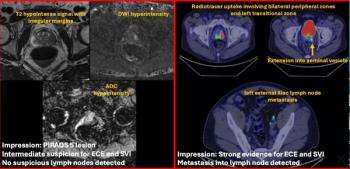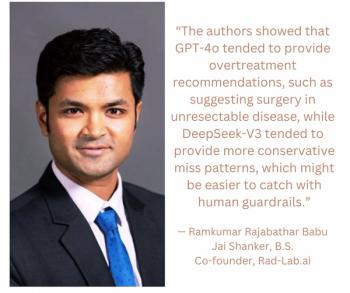
Novel method protects 2D and 3D CAD image integrity
Integrating computer-aided detection with PACS has become a recent trend in digital imaging. Data integrity issues can arise with DICOM CAD images, however, when the two systems are connected, according to a paper published in June.
Integrating computer-aided detection with PACS has become a recent trend in digital imaging. Data integrity issues can arise with DICOM CAD images, however, when the two systems are connected, according to a paper published in June.
Integrity concerns center on whether CAD images have been changed or CAD results altered. Data integrity assures that medical data have not been altered, destroyed, or deleted by unauthorized personnel.
"Traditional security methods such as encryption and access control by user password are able to protect data privacy and authenticity, but these techniques are ineffective for assuring data integrity," said Zheng Zhou, Ph.D., of the Image Processing and Informatics Laboratory of the radiology department at the University of Southern California.
Such issues already exist with standard CAD workstations, but they become more crucial when CAD is integrated with PACS, where CAD images and results can be easily accessed, according to Zhou.
"Assuring data integrity not only guarantees the objectivity of CAD results for decision support, but, more important, it enhances physician confidence in CAD," he said.
The paper presents a novel lossless digital signature embedding method called LDSE, which can automatically detect the alteration of even a single pixel in a DICOM image (Comput Med Imaging Graph 2007;31(4-5):353-360). LDSE can also completely restore the original data using a data embedding process, Zhou said.
"A traditional digital signature method is used to assure the integrity of CAD textual results," Zhou said. "By combining the LDSE method and the traditional digital signature method, we provide a complete solution for assuring the integrity of CAD data."
LDSE was developed for 2D DICOM images, but Zhou soon discovered a new challenge with 3D CAD results.
"A 3D tumor volume, for example, is segmented from a 3D CT lung study," he said. "We can apply the 2D LDSE method to each of the 3D segmented tumor images, but this is inefficient. The LDSE process takes 0.06 seconds for one CT image, and it must be repeated 30 or 40 times for the tumor volume - significantly delaying diagnostic workflow."
Worse, 2D LDSE is not able to detect any deletion or loss of images in the 3D volume. Zhou compensated for these deficiencies by developing a 3D LDSE method that assures 3D volume image integrity.
"Three-D LDSE has proved to be applicable and more efficient than 2D LDSE for 3D volume image integrity," he said.
Newsletter
Stay at the forefront of radiology with the Diagnostic Imaging newsletter, delivering the latest news, clinical insights, and imaging advancements for today’s radiologists.




























